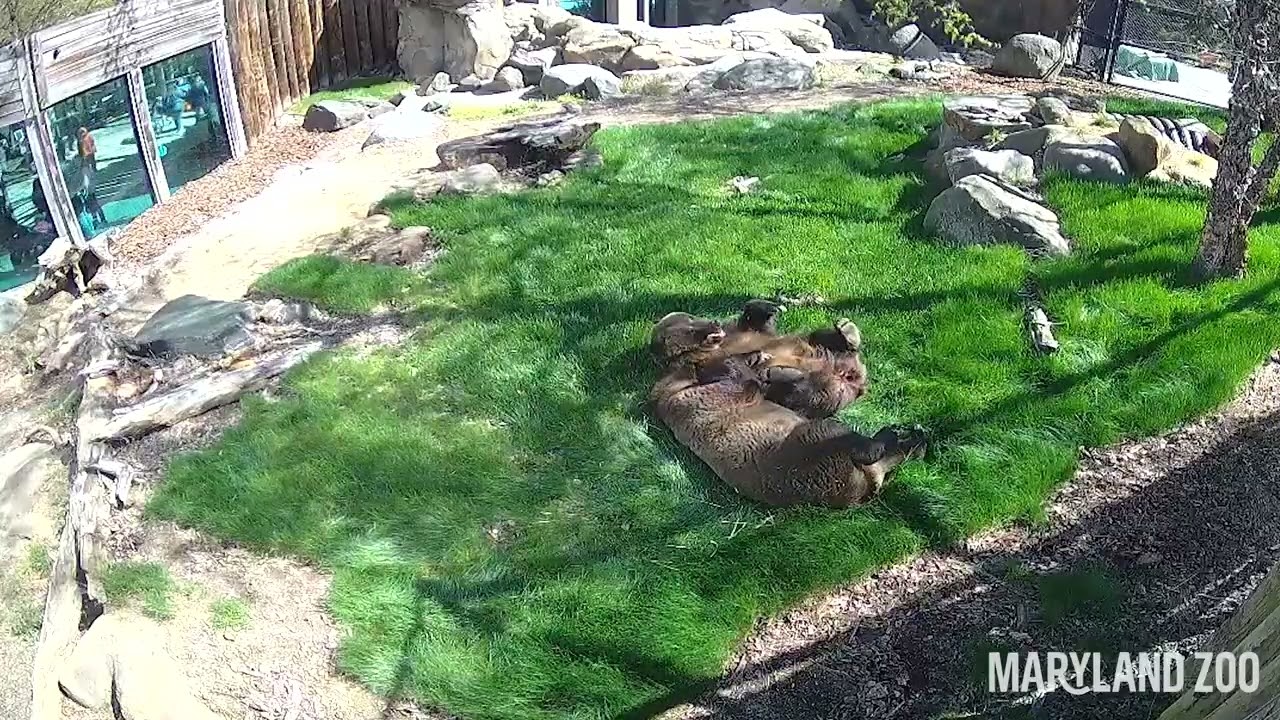- Life and Habits of Grizzly Bears Nova and Nita: Behavioral Insights and Daily Routines
- Zoological Management Practices: Care, Enrichment, and Conservation
- The Role of Zoos in Wildlife Conservation and Public Education
- Grizzly Bears’ Impact on Ecosystems and Biodiversity
- The Importance of Conservation Efforts for Grizzly Bear Populations
Grizzly bears are one of nature’s most impressive creatures, demanding attention for their sheer size and ecological importance. In this article, we delve into enchanting specifics of two grizzly bears, Nova and Nita, whose daily activities have captured the fascination of many through a delightful video depicting their lively morning routine.
Life and Habits of Grizzly Bears Nova and Nita: Behavioral Insights and Daily Routines
Grizzly bears, including Nova and Nita, embody the majestic force of wild nature. As members of the species Ursus arctos horribilis, their behaviors are beautifully aligned with the natural rhythms of the wild, even within the confines of a zoo environment. Their day often begins with active exploration and foraging, showcasing their innate curiosity and intelligence.
Grizzlies are diurnal, meaning they are most active during the day, which aligns with Nova and Nita’s early morning routine. Their activities involve searching for food, which in a zoo setting includes a carefully curated diet of fruits, vegetables, and proteins such as fish. This feeding regime emulates their natural diet in the wild, rich in nutritional diversity to support their dietary needs.
Observations of Nova and Nita also reveal intricate social behaviors and play, not merely as a means of interaction but as essential components of neural development and physical health. Playful wrestling is not just engaging; it mirrors survival skills they would need in the wild. Understanding the behaviors and habits of bears like Nova and Nita provides valuable insights into their cognitive abilities and social structures.
Zoological Management Practices: Care, Enrichment, and Conservation
Managing the well-being of grizzly bears in a zoo necessitates an approach that balances their physical and psychological needs. Zoo management practices evolve from studies of bear behavior and physiology, ensuring environments that mimic their natural habitat as much as possible. This involves providing ample space for movement, opportunities for foraging, and complex environments to stimulate their senses.
Nova and Nita benefit from enrichment programs designed to maintain their natural instincts. Such practices include scent trails, puzzle feeders, and varied terrains to explore. This encourages behaviors like digging, climbing, and foraging, promoting physical health and mental stimulation.
Veterinary care is another cornerstone of zoo management. Regular health checks, preventative treatments, and close monitoring are vital to the bears’ overall health. The establishment of comprehensive care protocols contributes to longevity and quality of life, echoing wild conditions.
The Role of Zoos in Wildlife Conservation and Public Education
Zoos serve a pivotal role in the conservation of species like the grizzly bear. Through captive breeding programs, endangered species are preserved, and genetic diversity is maintained. Education and awareness campaigns in zoos help visitors understand the ecological role of grizzlies and the pressures they face in the wild, including habitat loss and climate change.
Programs involving Nova and Nita are designed to highlight these issues. Interactive displays, talks by wildlife experts, and participation in global conservation efforts create a powerful impact. This enhances public engagement and fosters a deeper respect for wildlife, highlighting the critical connection between people and nature.
Grizzly Bears’ Impact on Ecosystems and Biodiversity
Grizzly bears are keystone species, playing a crucial role in their ecosystems. As apex predators, they influence the populations of prey species and maintain ecological balance. Their foraging habits also contribute to seed dispersal and soil aeration, benefiting the plant communities within their habitats.
Understanding the ecological impact of grizzlies like Nova and Nita in a zoo setting provides a reflection of their roles in wild ecosystems. Observing their interactions with engineered environments can inform conservation strategies, benefiting broader landscapes. By simulating their natural behaviors, zoos can explore new ways to maintain ecological integrity and protect biodiversity.
The Importance of Conservation Efforts for Grizzly Bear Populations
Conservation efforts for grizzly bear populations are critical in preserving these magnificent beasts for future generations. Threats such as habitat fragmentation, human-wildlife conflicts, and climate change have put pressure on their populations. Conservation strategies address these challenges through habitat protection, wildlife corridors, and community-based initiatives.
Zoos contribute to these efforts by participating in global conservation networks, sharing resources and knowledge. Engaging in collaborative research and leveraging technology for wildlife monitoring, they showcase the importance of integrated conservation strategies. Nova and Nita’s story exemplifies these efforts, offering a narrative that inspires collective action towards conservation.
By understanding these aspects of grizzly bears’ lives, their management in zoos, and their ecological importance, we gain a deeper appreciation and commitment to their preservation. Their existence is a testament to nature’s grandeur, calling for sustained efforts to ensure a harmonious coexistence with the wild.
*****
Source Description
After a long winter hibernation, the sisters are out and about soaking up that spring sunshine. ☀️


